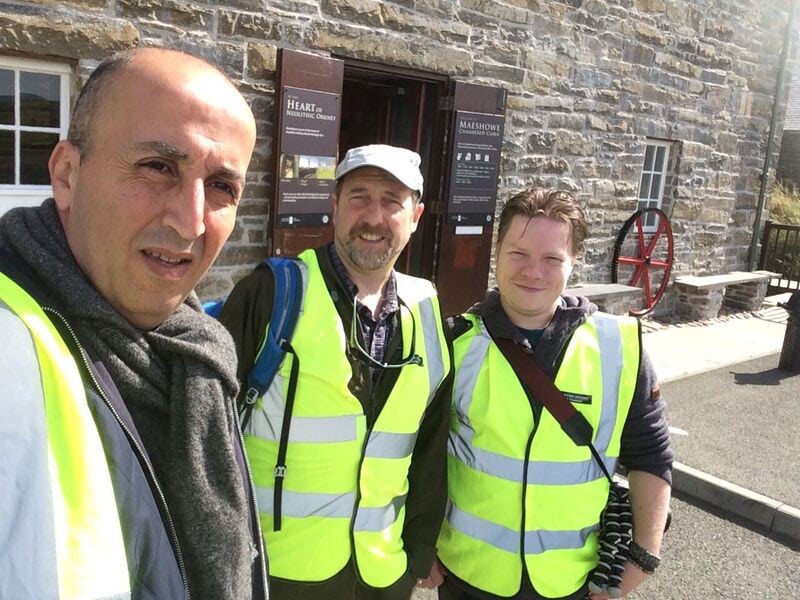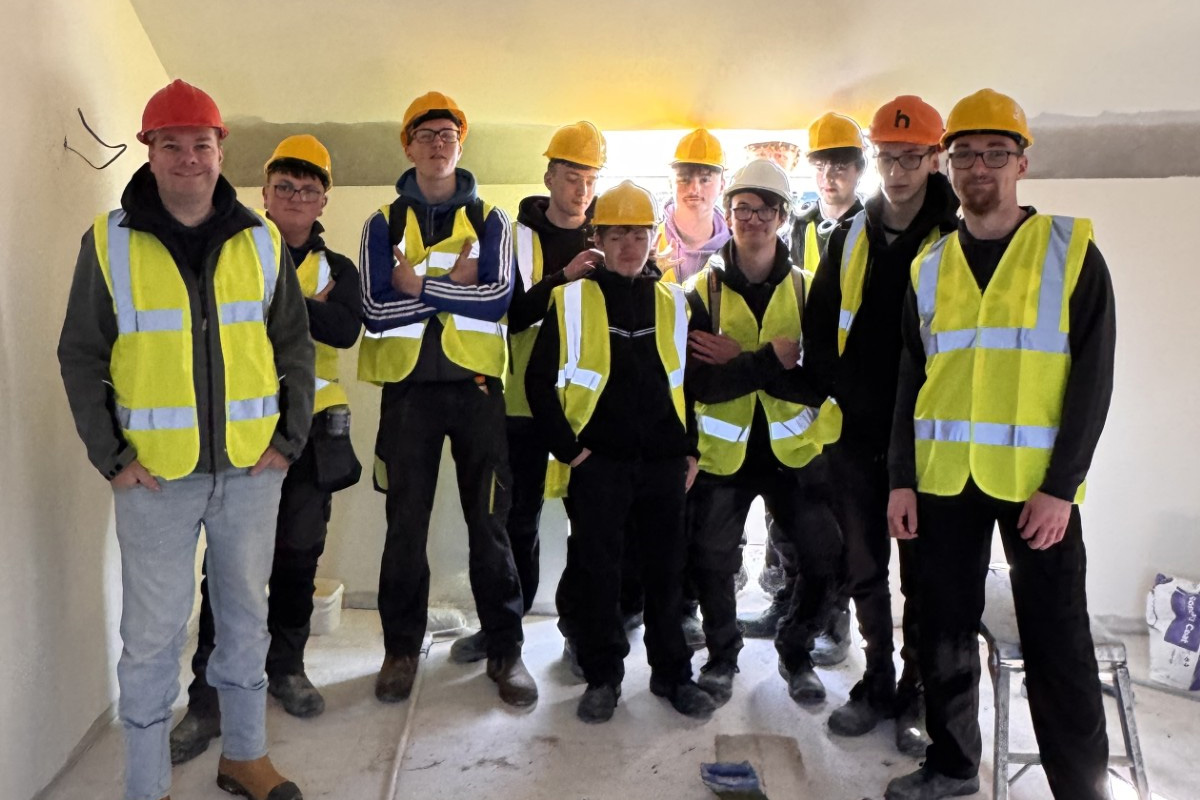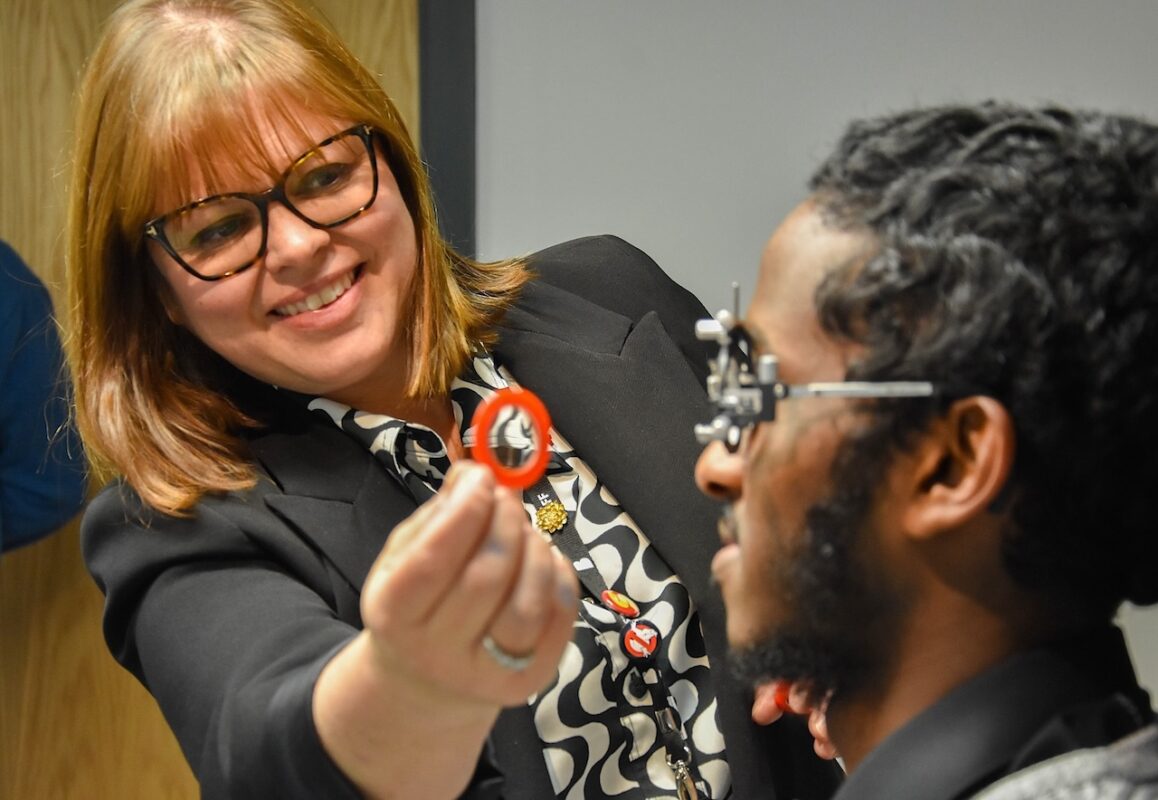University researchers complete study into visitor movement and egress from historic sites

Researchers from Robert Gordon University (RGU) have been examining visitor movement in historic buildings, in particular the effect of person order and mobility on egress times.
Frequently designed for defence and not visitation, historic buildings constitute some of the world’s foremost tourist attractions, and are witnessing unprecedented visitor numbers. This makes access and egress management important when considering both the visitor experience and evacuation requirements in an emergency.
The research study, funded by Historic Environment Scotland (HES), saw a number of RGU academics undertake different approaches to understanding visitor movement at historic sites.
Dr Arthur Stewart, Dr Eyad Elyan, Dr John Isaacs and alumna Leah McEwan, together with HES’s Dr Lyn Wilson, spent two days studying groups of tourists and interviewing staff at Orkney’s Maeshowe chambered cairn, a UNESCO World Heritage Site.
Using their data and a 3D scan of the site (provided by HES), the team used specialist software to model the environment and map movement of digital characters scaled to the size and shape of the Scottish population.
Due to the limited passing potential inside the Maeshowe access tunnel, the size and speed of an individual at the front of the line pivotally influences the egress of those behind. This criticality of person-order was replicated in the virtual model to generate accurate data, which can be scaled to larger and more complex buildings.
Elsewhere in the project, RGU’s Professor Richard Laing and Dr Marianthi Leon undertook study of the 3D digital visualisation of built heritage and its potential to inform building management practice.
This included the preparation of video materials and completion of a focus group with HES staff. The work connected with other research undertaken by the group, which has utilised digital scanning to explore public and user engagement with built heritage conservation.
Dr Arthur Stewart, who has recently been recognised as a Fellow of the Chartered Institute of Ergonomics and Human Factors, said: “Many of our historic buildings have narrow corridors with a single way in or out and limited passing opportunities.
“This results in bottlenecks and queuing under normal circumstances, but creates more problems when an evacuation becomes necessary and passing becomes impossible.
“While strategic vulnerabilities have been brought into sharp focus by recent terrorist attacks, balancing the needs of accessibility and security is not straightforward for historic buildings.”
Dr Stewart believes that the data from this partnership can be used to find vital future solutions for planning and modelling for public visitation in a new era of heightened security.
He added: “This interdisciplinary project, which spans ergonomics, computing, tourism and the built environment, is a first step which will spawn future research and deliver tangible benefits to public safety not only around tourism but many walks of life.”
The findings from the Maeshowe aspect of the study have recently been published in the journal ‘Human Factors’.











Responses